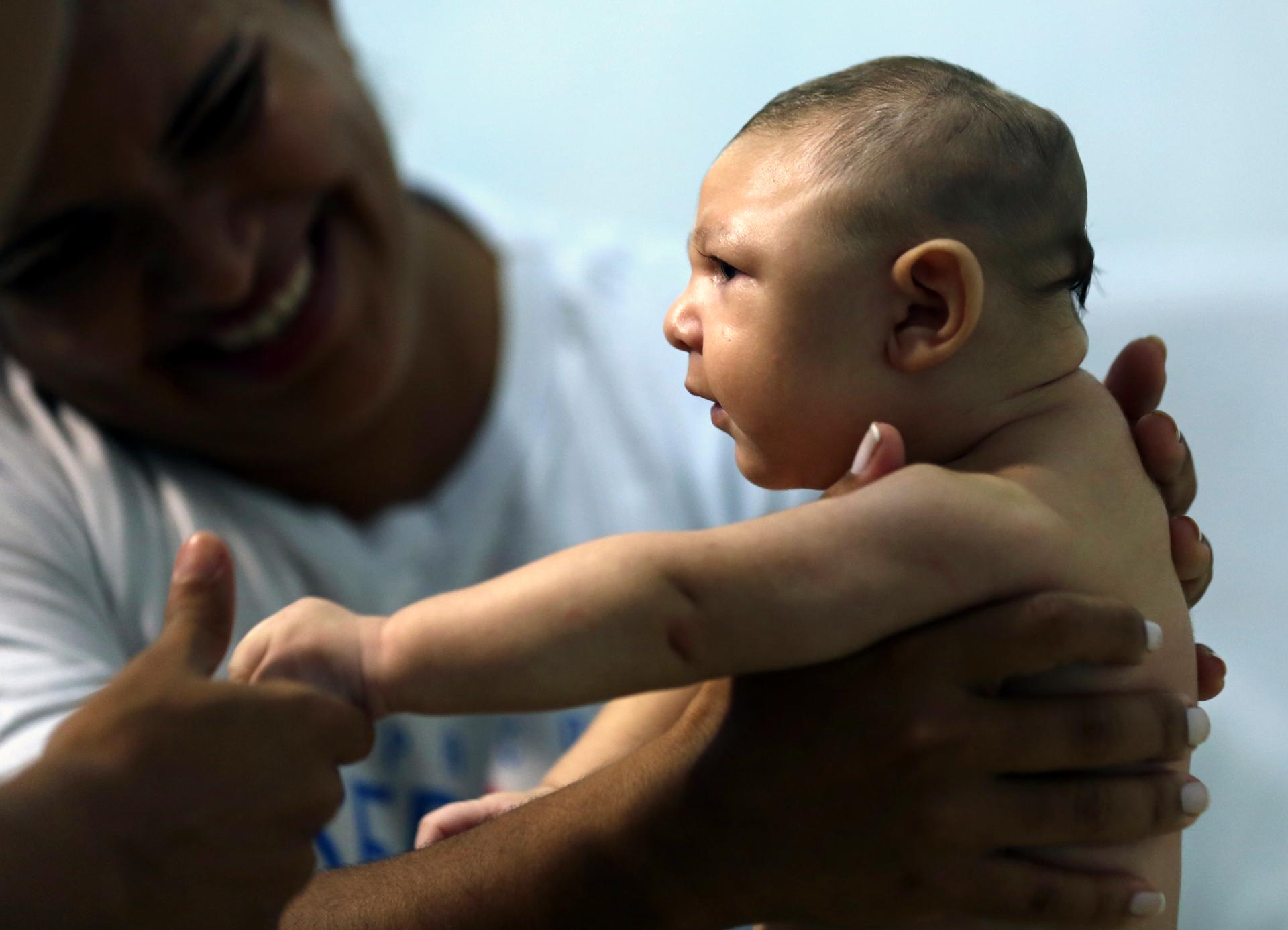Zika is spreading. Birth defects aren’t — yet
Therapist Rozely Fontoura holds Juan Pedro, a baby with microcephaly, in Recife, Brazil on March 26.
Across the world, researchers who study infectious diseases are watching two countries very closely: Colombia and Venezuela.
Among disease experts, those South American neighbors are largely considered the proving grounds for the mysterious Zika virus. The World Health Organization in February declared a global public health emergency over Zika, a mosquito-borne illness that scientists suspect has led to the birth defect microcephaly in northeastern Brazil and to Guillain-Barré syndrome, a crippling neurological disorder that can be fatal.
Part of the mystery surrounding Zika is that nobody’s quite sure whether it’s actually causing babies to be born with smaller-than-normal heads and malformed brains. Numerous studies are underway, but the evidence is so far inconclusive, and some of the numbers underpinning the theory have proven sketchy.
That’s where Colombia and Venezuela come in.
Both countries have reported thousands of Zika cases: In Colombia, officials estimate more than 40,000 people have been infected with the virus, including more than 6,000 women who contracted it during pregnancy. In Venezuela, officials claim there are a few thousand Zika cases, but doctors on the ground peg the number far higher, possibly in the hundreds of thousands.
What neither country is seeing so far, however, is a spike in microcephaly. That's what experts are really watching for, because a replication of what scientists believe happened in Brazil would be ominous for everyone.
“Colombia and Venezuela are really the places that will verify whether Brazil is unique, or if the pattern will repeat,” said Uriel Kitron, an expert in tropical infectious diseases at Emory University in Atlanta.
Mosquitoes spread Zika, but apparently so can another species that flies all over the place: Humans have transmitted it through sexual intercourse. Health officials so far count almost 5,000 confirmed Zika cases across the Americas, including handfuls in US tourist hotspots like Puerto Rico and the Virgin Islands. The Washington Post reports that officials across the region say the weekly rate of Zika infection is slowing down.

It was last August when doctors around the northeast Brazilian city of Recife say they first observed an increase in newborns with malformed heads. They began communicating informally with each other and eventually concluded that Zika was likely causing the birth defects.
But despite being on the lookout for microcephaly, pediatricians are not, so far, seeing an increase in Venezuela, said Dr. Huníades Urbina-Medina, president of the Venezuelan Pediatric Society. Urbina-Medina said he is in communication with a network of pediatricians around the country and that nobody has noticed anything out of the ordinary — yet.
“I talk to pediatricians and specialists in obstetrics and we don’t have any reports, official or unofficial, about microcephaly,” he said.
In Colombia, the government claims it has installed a robust monitoring network to track microcephaly cases that might be linked to Zika. But, so far, everything looks about normal, said Fernando Ruiz Gómez, Colombia’s deputy minister of health.
The birth defect, caused by a number of factors, was around internationally well before the Zika crisis came along. Colombia registers an average of 140 cases of microcephaly a year, according to its Health Ministry.
Ruiz Gómez said the government is currently investigating 34 cases of microcephaly across the country. That’s slightly more than the estimated number of cases expected at this point in the year, but not significant enough to cause alarm, he said. He added that the last couple of weeks have seen a completely normal rate.
“April and May are the critical months to establish the number of cases we have, and if our situation is similar to what they have in Brazil,” Ruiz Gómez said.
Timing is crucial here.
Epidemiologists (disease experts) believe Zika arrived in Colombia in mid-October. That means it has been infecting people in the country for over five months.
Dr. Jim Barkovich, a professor of radiology at the University of California, San Francisco, said the telltale signs of microcephaly should be obvious in ultrasound examinations after 20 weeks of pregnancy.
“I would think that they’re just coming into view,” Barkovich said of potential Zika-linked fetal malformations in Colombia. “If they do good fetal ultrasounds, they should start seeing calcification, they should start seeing a really shrunken brain with big ventricles. I would think that if they start looking carefully now, they should start seeing deformities.”
So, the next few weeks will be all-important.
If large numbers of abnormally small-headed babies are suddenly born in Colombia and Venezuela, then things look pretty bleak for other parts of the world where mosquitoes are rampant, like Southeast and Southern Asia, where Zika has already arrived, and the southern states of the US.
But if Colombia and Venezuela never see the sort of crisis that was reported in northeastern Brazil, then health officials and researchers have another puzzle to solve: figuring out what was behind that phenomenon, and whether Zika did, indeed, play a role.
